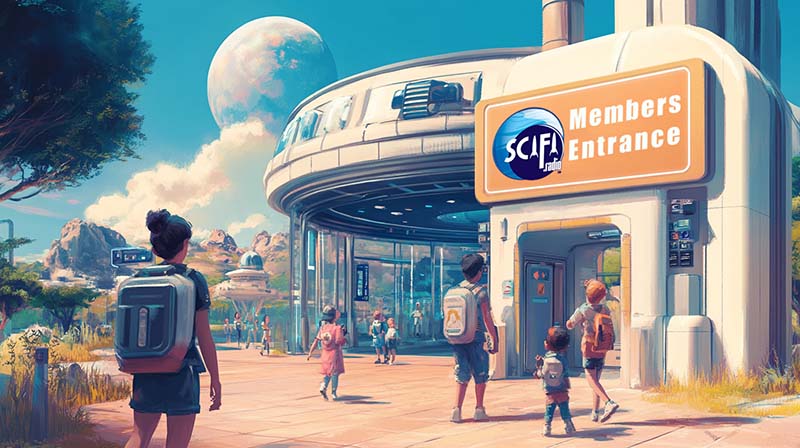Today is another landmark moment for fighting game enthusiasts. Capcom has just announced the release date for the Capcom Fighting Collection 2, a follow-up to their successful first collection. This new compilation offers gamers access to even more classic titles, preserving the rich history of Capcom’s fighting game legacy and making these gems available on modern platforms. No longer will fans have to resort to emulation or hunting down rare, expensive physical copies to enjoy these legendary games.
Before today, many of the games in this collection were only accessible through emulators, and for those seeking an online experience, platforms like Fightcade were essential. However, setting up and using these tools required technical know-how that wasn’t always within reach for the average gamer. The result? Countless potential players were left out, unable to experience the thrill of these classic titles simply because they hadn’t been re-released in over a decade.
This time around they are bringing the heat with Capcom vs. SNK: Millennium Fight 2000 Pro, Capcom vs. SNK 2: Mark of the Millennium 2001, Capcom Fighting Evolution, Street Fighter Alpha 3 UPPER, Project Justice, both Power Stone and Power Stone 2, and last but not least… Plasma Sword: Nightmare of Bilstein. Whew.
The original Capcom Fighting Collection showed that Capcom understands the importance of preserving their legacy, not just for the dedicated fans who have been there since the beginning, but for newcomers eager to experience what made these games legendary. The response to that collection was overwhelmingly positive, proving that there’s still a strong appetite for these classic games.
Now, with the announcement of the Capcom Fighting Collection 2, Capcom is poised to deliver yet another curated selection of fan-favorite titles, offering something special for both veterans and new players alike. This collection promises to bring together more of Capcom’s iconic fighting games, giving them a new lease on life and introducing them to a wider audience.
To recap from our last article, “Until now, the only practical way to play games like these were through emulation or paying through the nose for physical copies”. For those who wanted to experience these classics online, Fightcade became the go-to solution. However, setting up Fightcade required a level of technical know-how, from acquiring ROMs to navigating potential toxicity within the online community.”
“Fightcade has been a lifeline for fans, offering a reasonably well-maintained platform for playing these games. Yet, it’s not easily accessible to everyone—especially those who lack the tech-savviness to get it running. This has left a significant portion of the potential player base in the dust, unable to enjoy these games because they haven’t been officially re-released for over a decade—until now.”
As we dive into this new collection, we’ll explore the significance of each game included, its impact on the fighting game genre, and why it deserves a spot in this celebration of Capcom’s storied history.
Capcom vs. SNK: Millennium Fight 2000 Pro
Capcom vs. SNK: Millennium Fight 2000 Pro is the first installment in the celebrated Capcom vs. SNK series. Released in 2000, this game marked the beginning of Capcom’s crossover battles with SNK’s roster. Featuring a unique “Ratio” system, players could choose from a variety of characters from both companies and build their teams based on power levels. The game’s blend of characters and strategic depth made it an exciting entry that set the stage for future crossovers.
Capcom vs. SNK 2: Mark of the Millennium 2001
Capcom vs. SNK 2: Mark of the Millennium 2001 is widely regarded as one of the best crossover fighting games ever made. Released in 2001, it refined and expanded upon its predecessor’s mechanics, introducing the innovative “Groove” system that allowed players to choose from different fighting styles, combining elements from both Capcom and SNK games. With its extensive roster of 44 characters and deep gameplay mechanics, it became a favorite among competitive players and remains a high point in the crossover genre.
Capcom Fighting Evolution
Capcom Fighting Evolution, released in 2004, is an interesting blend of Capcom’s past fighting games. It features a roster that includes characters from various Capcom franchises, including Street Fighter, Darkstalkers, and Red Earth. The game incorporates elements from these classic series, providing fans with a nostalgic yet fresh experience. Though it had mixed reviews, its unique roster and gameplay mechanics make it a notable entry in Capcom’s fighting game history.
Street Fighter Alpha 3 UPPER
Street Fighter Alpha 3 UPPER is an enhanced version of the classic Street Fighter Alpha 3, originally released in 2006 for the PlayStation Portable. It includes additional characters and updates to gameplay, making it a definitive version of one of the most beloved entries in the Street Fighter series. The game retains the fast-paced action and deep mechanics of the original while offering new content and refinements, ensuring it stands out as a superior iteration of the Alpha series.
Project Justice
Project Justice, known in Japan as Tekkaman Blade, is a 3D fighting game released in 2003 as a sequel to Rival Schools. It features a diverse roster of characters from both the original Rival Schools and new additions. The game is known for its dynamic team-based combat, where players can switch between characters and use a variety of special moves and team attacks. Its unique style and engaging gameplay make it a standout in Capcom’s lineup.
Power Stone
Power Stone, released in 1999, is a 3D brawler that offers a refreshing take on the fighting game genre. Set in a series of multi-dimensional arenas, the game features a roster of unique characters who battle it out using a combination of hand-to-hand combat and environmental interactions. The game’s chaotic, free-form battles and power-up mechanics make it a fun and engaging experience that stands out in Capcom’s fighting game catalog.
Power Stone 2
Power Stone 2, released in 2000, builds upon the innovative gameplay of its predecessor with new characters, stages, and enhanced mechanics. This sequel expands the multiplayer experience, allowing up to four players to engage in frenetic battles in colorful, interactive environments. The game’s improved graphics and additional features make it an even more exciting and chaotic brawler, solidifying its place as a beloved entry in the series.
Plasma Sword: Nightmare of Bilstein
Plasma Sword: Nightmare of Bilstein, released in 1998, is a 3D fighting game that offers a unique blend of weapons-based combat and futuristic themes. The game features a roster of characters equipped with a variety of weapons and special abilities, allowing for diverse and strategic battles. Its innovative combat system and distinctive visual style make it a memorable part of Capcom’s fighting game history.
For years, fans have kept the spirit of these games alive through emulation and platforms like Fightcade. Now, with this official release, a whole new generation of players can experience the thrill of iconic matchups, the depth of complex mechanics, and the sheer fun of these crossover battles. And for those who have been part of the journey all along, this collection is a triumphant return, offering a seamless way to relive those classic moments without the hurdles of outdated hardware or complicated setups.
But as we celebrate this release, one can’t help but wonder—what’s next? With Capcom’s recent track record of bringing back fan-favorite titles and the success of collections like these, imagine revisiting other iconic Capcom fighters, perhaps with even more obscure or forgotten gems, all polished and ready for modern systems.
As we look forward to the future, one thing is clear: Capcom has shown that they understand the importance of preserving their legacy, not just for the dedicated fans who have been there since the beginning, but for the newcomers eager to experience what made these games legendary.
So get ready to dust off your arcade sticks and sharpen your skills—because this is just the beginning. With the potential for even more collections and re-releases on the horizon, it’s an exciting time to be a fan of Capcom’s fighting legacy.
![]()











